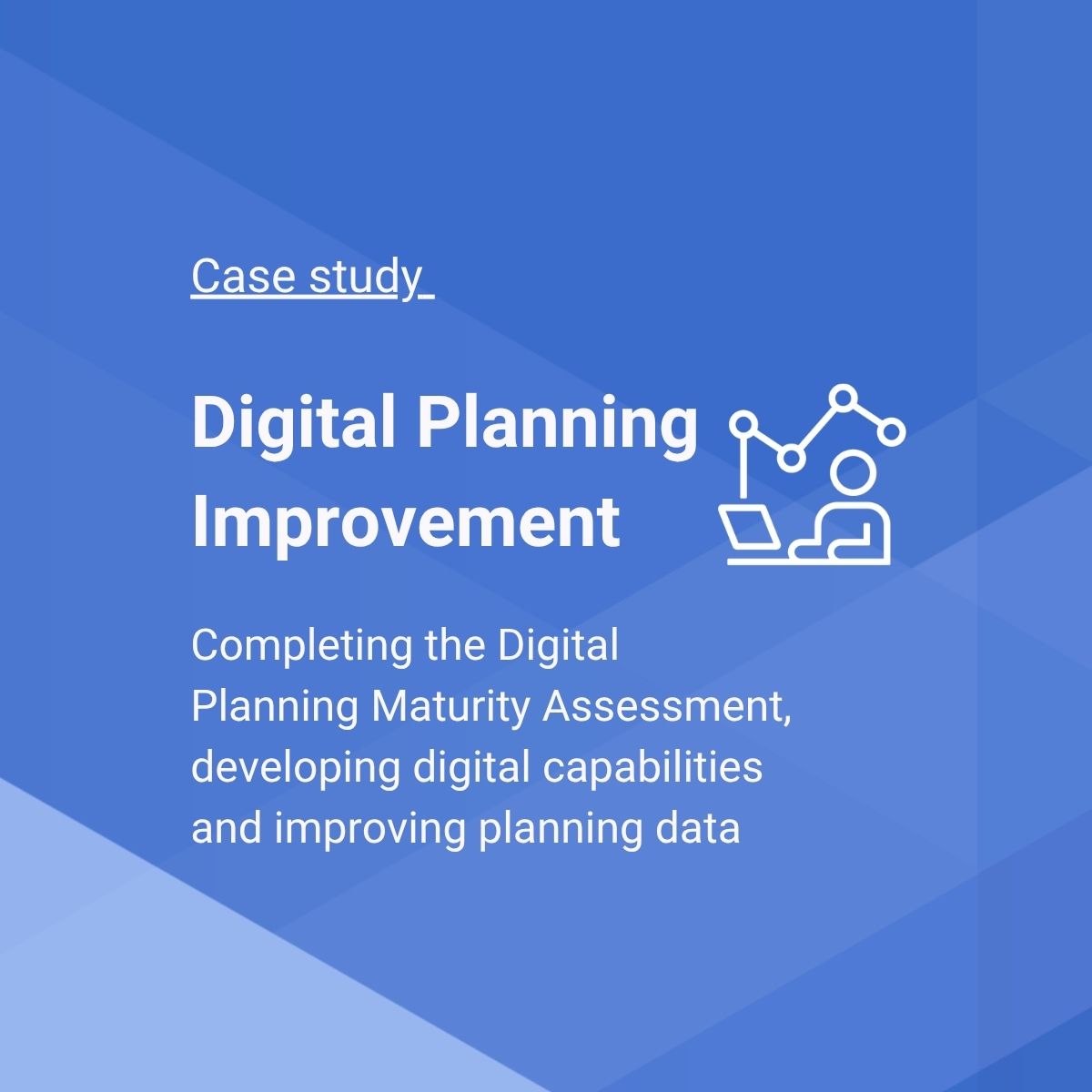Transformation
The local planning authority joined Open Digital Planning (ODP) through the Digital Planning Improvement Fund (DPIF) in April 2024, to transform their planning data.
The first step was to carry out a Digital Planning Maturity Assessment to assess their readiness for digital transformation and pinpoint areas for growth. While this showed they met or exceeded the average in most areas, it proved to be a useful tool identifying important improvement areas.
Goals
The authority’s goals were ambitious but grounded in practical needs. The team aimed to:
- Clean and standardise their historic planning data
- Automate updates to reduce reliance on manual uploads
- Improve public access to planning information
- Create internal tools to support internal teams like the Tree Preservation team
- Build internal capability and confidence in digital processes.
Key activities
To meet these goals, the team undertook a series of coordinated activities:
- Hired a dedicated digital project officer using the DPIF funding
- Held weekly working groups to co-ordinate dataset preparation
- Cleaned and standardised historic planning datasets, including Tree Preservation Orders and listed structures
- Submitted all required datasets to the Planning Data Platform
- Set up automated updates from their planning system
- Engaged actively with the ODP community through Slack and peer networking.
Results
- All datasets are now live on the Planning Data platform, meeting DPIF specifications
- Automated processes have been established - no more manual uploads eating up staff time
- Internal collaboration is transformed with stronger links between planning, data and IT teams
- Staff confidence boosted in managing digital planning data
- Created a future-ready foundation for exploring AI and new technologies
Lessons learned
Based on their experience Westminster City Council has the following valuable insights to share with other councils embarking on a similar journey:
- Start simple:
Gregor Gault, Digital Project Officer, said: “At first it felt quite daunting looking at all the datasets. Focus on meeting the minimum viable specification first, then build from there.”
- Centralise your data: Hold your data in one place to simplify everything from extraction to future updates.
- Know your systems and software - or work with those who do: Technical expertise is essential for navigating legacy platforms, and spotting data quality issues.
- Actively collaborate: Regular internal meetings and hands-on coordination helped overcome resource constraints and build internal capability.
- Use the ODP community: The ODP network provided crucial support and guidance throughout.
“ODP has been a great resource—connecting us with other authorities and helping us build confidence in our digital planning work. We've submitted our datasets and fulfilled our brief. Now we're in a strong position to build on that and improve how we use planning data.”
Gregor Gault, Digital Project Officer, Westminster City Council
What's next?
Westminster is now leveraging their success to:
- Launch auto-updating datasets via the council’s website
- Improve public-facing maps and tools
- Develop internal mapping tools for specialist teams
- Explore AI integration opportunities
- Inform future procurement of new GIS and back-end planning systems
- Continue active participation in the ODP community
